L.A. BAT Seminar, Boogie’s session with Grisha Stewart
May 17, 2013 at 10:40 am 12 comments
*slightly edited – May 18th*
Two weekends ago, I attended Grisha Stewart’s first ever BAT seminar in Los Angeles.
As you know, I have read Grisha’s book which I illustrated (see link on right side of this webpage), watched most of the DVDs, I have been occasionally following the functional rewards yahoo group, and done mostly “stealth BAT” on the streets with dogs behind fences. However, in terms of formal BAT set-ups, I am not that experienced – having done only about 4 set-ups in the past few years – mostly with people triggers – and only up to BAT Stage 2.

Grass is good!
Backtracking a couple of months ago, Boogie volunteered himself as a BAT student dog at Balboa Park in Encino. Thank you to CBATI instructors, Ellen Gerdes-Naumann and Kristin Burke for setting this up! I found it all to be a bit chaotic because Boogie was very distracted by everything around him, and it was really hot. At first I had little luck convincing Boogie that the decoy border collie was more interesting than the tennis balls flying about in the courts, the squirrels and rolling in the grass. There was so much happening around us. (Boogie, pleeeease look at the dog…. we are all counting on you to make this a successful BAT session)
We eventually we closed the gap between Boogie and the collie and there was a brief greeting. I got a bit nervous about Boogie’s intensity and jerky movements (which is what usually happens during Boogie-dog greetings) the raised hackles, and his slapping his paw on the collie’s back, trying to hump her and all that. The instructors reminded me to keep my leash loose and Ellen offered this useful tip: “When in doubt, look at the other dog. If she is not worried, don’t worry. Everything is fine.”
And then last week after the seminar, I was very privileged to have Grisha Stewart – the founder of BAT – and her dog Peanut over here to do a dog-dog BAT session with Boogie and me. Peanut and Boogie did a Parallel Walking session and Irith and Sarah took video and helped me organize myself, reminding me to mark, relax my leash hand, also notifying me whenever a stranger or mail carrier approached. And then after the session, we all viewed the video footage and analysed Boogie’s movements and my (crappy) leash handling skills in slow-motion.
Here are some notes from the weekend’s BAT seminar including general thoughts:
1. BAT IS ABOUT THE DOG’S CHOICE.
I don’t think I really fully understood this before. In addition to marking and rewarding polite behaviors and/or cut-off signals, a key feature of BAT as a training protocol is letting the dog choose. In other words, asking and listening to the dog. The dog chooses if he wants to get information from the trigger. The dog chooses when he is done and ready to move away. The dog chooses the direction that he wants to move away to…(Not necessarily a straight line back and forth) The dog chooses the non-food reinforcer (functional reward)… which may be sniffing or moving forward. Unlike in other training protocols, the BAT handler isn’t supposed to be controlling the dog’s movements, only paying attention and helping the dog stay below threshold. There should be minimal verbal communication and leash pressure at all times.
“The Five Second Rule” came up as a great example of letting the dog choose.
Grisha: “Socialization should be on the dog’s terms, not ours”.
If the dog comes to you and leans into you, then pet the part of his body that is closest to you. After 5 seconds, stop and wait. If the dog wants more petting, he will let you know by leaning in some more. If he is done, then we should respect that he is done and honor his need for space. This respect for affection boundaries should work both ways. When we are done giving affection to a dog who wants more affection – we should give him an “all done” signal. This is a great YouTube video about asking the dog if he wants to be petted.
2. NEW LEASH SKILLS.
In the seminar, we did leash-handling exercises and took turns to be the “dog”. One person held one end of the leash in their hand, the other person did the handling. It was quite a revelation to be able to feel the tiniest softest amount of pressure on the leash. The point of this exercise was to show that dogs can feel the lightest movements of the leash. We don’t need to pull them.
“The dog should always feel like he is OFF LEASH except when you stop him to prevent him from going over threshold”
Grisha and Sarah both suggest that I learn the Silky Leash Technique... (Me: “Yes I illustrated this for the book but I have never tried it”) Watching the video playback, I notice that I tighten the leash way more often than I think I do, and I do this unconsciously a lot of the time…and whenever the leash tightens, Boogie’s body leans the opposite way.

Two leash techniques covered in the seminar:
The Slow Stop: “Use when your dog starts to be magnetized towards the trigger, or just whenever you want to stop.” The idea is to give your dog warning that you want him to stop without yanking the leash. It’s like slowly braking a car vs. slamming on the brakes. Stopping too abruptly can lead to the dog exploding. I really like this Slow Stop technique. I have been doing this every day since the seminar and it makes a big difference! I can see Boogie in front of me … his body axis goes from forward-leaning to more centered as he stops. I am using it also as soon Boogie pulls on the leash. When he stops, I wait for both of us to rebalance before we continue walking.
Mime Pulling or How to Change Direction: Get into your dog’s peripheral vision (270 degrees) and “Mime Pull” = slide left and right hands along the leash – without actually shortening the leash. Call your dog (or make kissy noise), bend knees, turn your body towards where you want to go, so your dog follows. We are giving the dog information (leash flutter) that we are changing direction, without physically pulling him to move. Unfortunately, mime pulling doesn’t work on Boogie when he has his mind set on where he wants to go and will even lie down on the pavement to make his point. But maybe it will work if I could master the Silky Leash Technique….
3.WAITING FOR DISENGAGEMENT. UNDERSTANDING “Cut-off Signals”
In BAT when the dog is looking at the trigger or decoy, the dog is using all his senses to get this information: “Is it safe for me to turn my back? Do I need to fight?”
The idea is to wait for the disengagement to happen naturally, however long it takes, without prompting or calling the dog. We prompt or call only when the dog is stuck and likely to go over threshold. A big revelation for me this week is that while a dog may look like he has turned away – and may give the impression that he has disengaged – he may not actually be fully done. The nostrils may still be twitching, the body may still be leaning forward slightly, ears flicking, and if/when you mark “Yes!” he may not want to move because he is not ready. In which case, we should keep the leash loose, rebalance, exhale, wait…
This step is not always easy because it takes knowing how to read subtle signals really well in the context of what is happening – and this is why it has been super helpful to have a professional set of eyes around to interpret what is going on, and also to have video footage to review, to see missed signals.
There was a demo dog at the seminar- Kiku, an Akita – who, to my less-experienced eyes, looked pretty relaxed facing the trigger 60 feet away. Before this BAT seminar, I would have marked the smaller signals, which I now know, did not indicate that the dog has truly disengaged.
Video of BAT demo session from the seminar:
Several times during Boogie’s BAT walk, when I marked “Yes!” Boogie did not want to move. When we replayed the video from our session later, (with Grisha doing Boogie’s voice-over: “Let me see how many ways I can turn my head”) it was clearer that Boogie disengaged only when he was able to turn his whole body away. He was still engaged on the other dog even when he was turning his head and looking at me.
Video of Boogie turn-away:
Maybe it’s because I have reinforced so many Boogie head turns in the past (assuming he was fully done when he may not have been) that for Boogie, head turns = good things = we get to move!
I had thought that the whole point of marking and rewarding polite behaviors was so that these behaviors are more likely to happen… and that this is a good thing and this was the whole point of BAT. However, now I am seeing that there is a distinction between trained behaviors and the dog being ready to move away or move forward, and in BAT we are supposed to honor the “cut-off” moment, more than the smaller behaviors…
Sarah: “This is not like Clicker Training where you click for a high rate of reinforcement. We are waiting for the dog to make a choice.”
Grisha: “The more it is the dog’s decision to turn away, the more that he will learn”.

From the BAT book
Sarah offered a useful tip: Think of the verbal marker as a question, like a “Ready?” or a “Done?” (vs “Yes!” which feels more like a cue/command to move) This choice of verbal marker doesn’t make any difference to the dog , but it helps us get into the right frame of mind. I really like “Ready?” or “Done?” because I need a different cue anyway, for BAT Stage 3. Whenever I say “Yes!” Boogie looks at me like there is going to be food. I also don’t want to poison the “Yes” that I am already using in non-BAT contexts if I don’t follow up the “Yes!” with food as primary reinforcer.
So change and progress are relative… I remember during our very first BAT set-up years ago, the best cut-off signal we could hope for back then, would have been a single eye-blink to break the eternity of Boogie’s staring and stillness. And then he started offering more eye-blinks, softened ears and head turns. These days, Boogie is a much more relaxed dog than he used to be and generally less stiff and stuck on things. But of course, now for me to be sure that Boogie is really done, I have to wait for bigger signals; bigger changes in his body language.
Yesterday, I was thrilled when Boogie looked at a large dog who was staring at him, and on his own (with no prompting from me) chose to turn away and sniff the ground. This morning, a hyper little dog appeared on my front lawn. Boogie turned his head to look at me the first time. Yes and walk away. The second time he looked at the little dog and did a big shake off. I love it when this happens.
Video: full body disengagement “Yes, I am done here.”
Seminar note: The approach and retreat can be in a zig-zag or curved direction. It doesn’t have to be in a straight line.
During the seminar, Grisha made another interesting point about disengagement and why we don’t call the dog; why we wait:
“Be careful. Dogs with a huge amount of obedience training may not have really disengaged from the trigger just because they walk away with you when you call them.”
Alas, I don’t have the problem of an “over-obedient dog”.
4. THE “FUNCTIONAL REWARD” may not be what you think it is.
“It is always the dog who decides what the Functional Reward is.”
In the seminar, Grisha brought up a cool “Functional Reward” example: The case of a dog’s reactivity towards a cat. First we have to figure out what is really happening. If the dog’s reactivity is predatory (the desire to grab something), then the functional reward can be a game of tug. If the reactivity is fear-based, then the functional reward should be distance away from the cat. Each time the dog engages and disengages, we would mark and reward by letting the dog move away from the cat. At the same time, we can also reward the cat for being calm. The cat’s reward = getting petted, & dog moves away. This way, we are honoring both animals’ need for space; and both dog and cat are BAT-ting at the same time.
In BAT, distance or space is the major primary reinforcer and I learned this weekend that this doesn’t always have to be literally moving backwards. Moving forward or sideways, may be more reinforcing than moving backwards. Sometimes moving in itself is reinforcing. Or moving backwards only a few steps (Boogie: “Why are we walking so far away?“).
Boogie would rather move forward in the direction that he wants to go in, than retreat. In which case, a diagonal movement forward may be best so that he doesn’t get too close to the decoy. Or as Grisha suggested for future BAT set ups: the decoy dog could be walking behind the student dog so that the functional reward for the student dog is moving forward (away from decoy). Several times, Grisha also had Peanut retreat as the functional reward.
Irith suggested that the “Monster In The Middle” set-up would be a good one for Boogie, because he gets to keep moving, provided that the decoy dog is super mellow and has no issues being circled by another dog.
During our BAT walk, when Boogie stopped wanting to retreat and made it quite clear he wanted to walk forward in the direction of the decoy, we assumed that he wanted to get closer to Peanut. Grisha moved Peanut off the path to one side and when I led Boogie forward, Boogie walked past Peanut without even looking at him. It seemed that the true functional reward in this trial was WALKING FORWARD south on Lyman towards Hollywood Blvd where we always walk, every single day. The familiar route that may lead to stinky stuff in the bushes outside the Goodwill parking lot….
Grisha: “Boogie has the neighborhood mapped out and he knows exactly where he wants to go”.
So I am still a little confused here about the Functional Reward and if it matters whether or not this is a Negative Reinforcer = moving to get increased distance from Peanut, or a Positive Reinforcer = moving to get ahead to good stuff on Hollywood Blvd. Is this distinction relevant? Are we supposed to set things up so that the movement away from the decoy is still about the decoy?
I want to be sure that Boogie is learning the right stuff and if I am reading the situation correctly. If the decoy is becoming invisible after the initial engage-disengage, I am still (without a professional set of eyes present to help me out) not sure how to tell if this is a case of Boogie thinking “I am feeling safe enough now. Let’s go” or if it’s an elephant-in-the-room scenario of “I really can’t handle that dog at all. Let’s pretend he doesn’t exist”.
Grisha said that if Boogie is completely ignoring Peanut (elephant in the room), this is a sign that we are working too close, we should not push, we should make things easier for Boogie. We either increase the distance between the dogs, or switch to Stage 2 with clicks and bonus food rewards. Which is what we did… a combo of Stage 2 and Stage 3.
5. On not using FOOD. (BAT Stage 3)
At the seminar, Grisha had made some thought-provoking comparisons between BAT and other training protocols … and in most cases food was a big issue. Ideally, BAT should be done without food rewards if we want the dog to really learn. Some examples:
BAT & “OPEN BAR” COUNTER-CONDITIONING.
With BAT, getting information (“looking” at trigger) = safety. The dog has a choice to be pro-active. The dog also has a choice to move away. With Counter-conditioning (overfeeding), the dog is so motivated by food they are not learning to process what is really happening in their environment. CC is not an active process for the dog. The trigger appears and disappears. Food appears and disappears.
I still use counter conditioning with PEOPLE on the street because people come and go so quickly, AND because I can’t faithfully predict which people are triggers and which ones are safe for Boogie, it’s easier to do CC with every single person. This protocol has worked really well for us. Now Boogie turns to look at me on his own, when he spies a trigger. “Weird guy approaching. Where’s my treat?” Otherwise, he just moves off to sniff and ignores the person.
BAT & CONTROL UNLEASHED®
In CU, triggers are cues for the dog to focus on the handler. According to Grisha, many highly structured click-and-treat “focus-on-the-handler” games are great for management and survival but don’t really teach the dog how to cope with triggers. Reactivity/aggression/frustration issues are not so much issues between the dog and the handler, but between the dog and his environment. In BAT, we honor the dog’s need to process his environment (“is it safe for me to turn my back?“) instead of having the dog stare at the handler all the time. In BAT, when marking and rewarding the dog’s “look away” from the trigger, this doesn’t necessarily have to be on the handler.
I haven’t done CU exercises except for “Look At That” so I am not qualified to comment. I still ask Boogie to look at me when people appear on the street as part of CC. However, whenever Boogie turns away from a trigger and looks somewhere else or does something else (eg. ground sniffs) instead of giving me eye contact, this always feels so much more rewarding for ME. Then I know that he really isn’t turning away from the trigger just to get a treat (as he does with CC) and that he is able to handle things peacefully on his own.
Grisha: When we don’t use food rewards, we get a more honest answer from the dog… we get a more real baseline of what the dog is feeling. Food also makes a dog conflicted – even though he would really prefer to move away, he will eat. The other problem is when people punish or correct their dog – this teaches the dog to hold it all in; the dog “lies” to us, we don’t see what he is really feeling.
My visual summary:
*Edit to add: I don’t want to give the wrong impression with my illustration above (which I may revise) to suggest that BAT should replace other techniques or that it is better than other techniques. I wanted to mainly show where the dog’s brain is at, in each example, based on my seminar notes. I am copying and pasting this from Grisha’s comment :
Dogs need to really get information about the trigger and if you can use open bar / closed bar classical counterconditioning (CC) or clicker training focus to get close enough to experience the trigger and figure out that it’s safe, rehab is likely to happen. You can even combine tools to allow the dog free choice throughout, but sometimes have food. However, if the dog spends all of her time doing the windshield-washer thing (see man -> get treat, see man -> get treat) then the dog doesn’t have a chance to process the information.
Doing punishment-based ‘obedience’ near the trigger is a common technique with potential for even worse fallout, because the dog is distracted AND the dog can make a negative association with the trigger. At least with food, the dog is having a good time.
6. CLOSE-UP GREETINGS.
BAT is really big on honoring the dog’s need for space. I think Grisha may have said that BAT is a “flight-based” training protocol – we reinforce the dog’s choice to walk away from a scary situation. ( example of a “fight-based” training protocol would be where the student dog might bark his head off at a trigger and the trigger only leaves when he stops barking. It has more of an anti-social goal )
Close-up greetings is a scenario that I feel the least confident about because I have done so few dog-dog BAT sessions or close-up greetings with new dogs. Boogie has his friends, but I generally err on the side of caution and avoid unfamiliar (or barky) dogs. Notes from the seminar:
- Prompt more than you would with dogs that don’t know each other. eg. Sniff, call away, treat.
- If one dog gives a cut-off signal, call the other dog away (if he/she doesn’t respond)
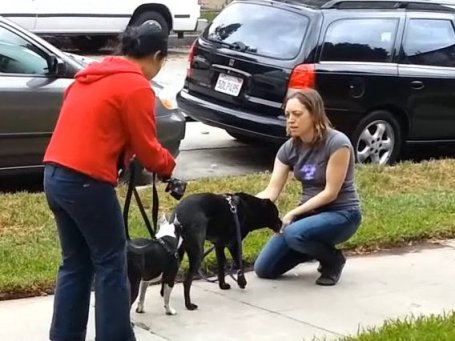
Boogie sniffs.
Above, photos of the final interaction between Boogie and Peanut. Grisha had Peanut’s butt facing Boogie for as much as possible during our walk up to the end of the session. (to quote Grisha: “The blunt end, not the pointy end”)
After about an hour of parallel walking, Boogie sniffed Peanut on the butt and I clicked. (BAT Greetings Stage 1) Boogie didn’t register the click the first time. He was so intensely sniffing. Second sniff, Boogie got even more intense and pulled forward to sniff Peanut’s crotch. After a short break from each other, I asked Boogie if he wanted to say hi again but he showed no interest in moving closer to Peanut and instead starting digging and eating dirt (sign of social anxiety, conflicted emotions).
Grisha: “He already has all the information he needed”.
We ended the walk with the two dogs standing pretty close to each other. I think they were both quite relieved that they didn’t have to do any more Parallel Walking. I live in an insanely busy neighborhood and both dogs were quite stressed. Grisha pointed out that more walks would have helped to lessen the intensity/stress of the greeting.
7. MY CHALLENGES
Sarah: “Listen to Boogie. Your job is to stay sensitive to what is actually reinforcing to him in that moment–while still helping him maintain a successful threshold distance in case he starts getting magnetized.”
Thanks to the BAT seminar and our BAT walk with Boogie and Peanut, I feel I have a ton of new information to process especially with learning how to handle the leash, remembering to relax and rebalance myself in order to help Boogie rebalance. I have learned now that BAT as a training protocol is actually a lot more fluid or organic than what I thought it was, and that in the past, I may have made things a bit aversive for Boogie by trying to stick to particular patterns that didn’t need to be stuck to, or not paying enough attention to Boogie’s thresholds & choices in relation to the general environment (not just between Boogie and an obvious trigger).
In the BAT seminar handout there was a diagram explaining the term Threshold = “the line between stress levels”. I think this has always been difficult for me. To identify where this Threshold is, exactly. I don’t want to have to let Boogie go into staring mode to gauge where his engagement zone is. (Quote Suzanne Clothier: “The Think and Learn Zone” = dog is able to split his attention between trigger and on handler) At the same time, I don’t want the opposite… I want to be sure he is engaging with the trigger, not purposely ignoring it because there are more interesting distractions around.
There is also the issue of Boogie not wanting to do BAT for long… almost as if he is bored, or it’s too much work. “Do I really have to go and look at that dog again? I already told you I am done. TWICE.”
After one or two trials, Boogie often seems ready to move on and away (“ok, I know this ol’ game”), unlike the dogs I see in Grisha’s seminar videos – who seem to happily walk back and forth, engage and disengage over and over again without other cares in the world. Would I be adding stress by having him continue BAT-ting? Or should we move on, and what exactly has been learned here? Would the fact that Boogie only wants to deal with the trigger for a very short period indicate that
1. He feels safe now ?
OR
2. Too much too soon – gotta get away from it all?
Miki sent me this Suzanne Clothier’s article on Thresholds: It’s More Than Under Or Over which I think it super helpful. ( Made me think of the Good-Cheap-Fast diagram… it’s a balancing act!)
Miki, Sarah, Grisha all brought up the same point: My environment is stressful. Boogie’s “Think and Learn Zone” is very tiny and narrow when we go on walks because there is so much stuff happening that I cannot control.
And so to summarize, I think the biggest challenges for me are still what they always have been:
- the fact that I live in a busy neighborhood with lots of people, dogs, traffic, etc. coming and going all over the place. There are so many factors outside my control. It’s as if we take 3 steps forward and 2 steps backward each day. And I don’t have a fenced private yard. Grisha suggested driving to a quieter neighborhood and practicing there.
- I can only do so much as one person. It’s hard to be vigilant about my environment (watch for triggers), practice better leash skills, and pay 100% attention to Boogie’s body language all at the same time. I need professional assistance for BAT and it would help to have video feedback. (A posse of people around with every BAT session?)
- I am not going to see significant progress until I do more BAT sessions in the right environment with nobody else around to distract Boogie or to distract me. It will be easier to read Boogie’s signals , understand his thresholds and functional rewards when we are in the right environment. Thanks to the BAT seminar, I may have connected with a few new people who have mellow decoy dogs we can practice with 🙂
Thank you again to Grisha, Peanut, Sarah, and Irith!!! – Lili & Boogie.
Disclaimer: Please note that this blog post is totally personal – these are my own observations, thoughts, and visual interpretations of the stuff I read and think about, and do not officially represent BAT. I want to mention this because I noticed that Boogie’s Blog is listed on the BAT Seminar handout 🙂
Entry filed under: BAT sessions, Training. Tags: BAT.
12 Comments Add your own
Leave a comment
Trackback this post | Subscribe to the comments via RSS Feed
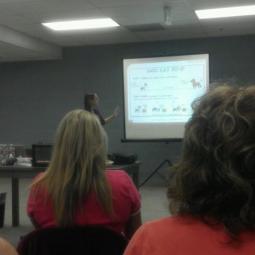
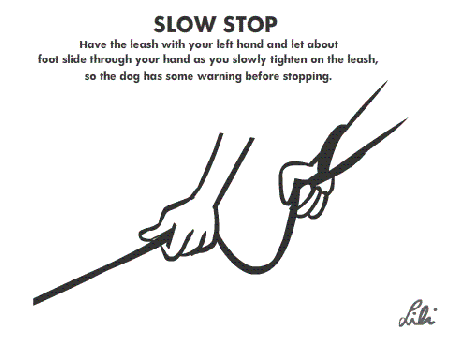
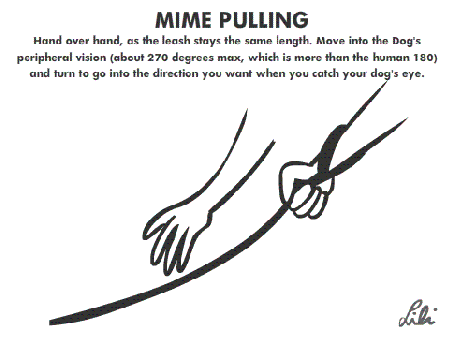
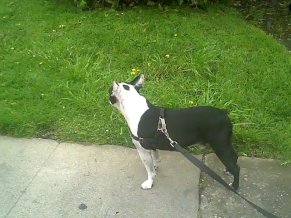

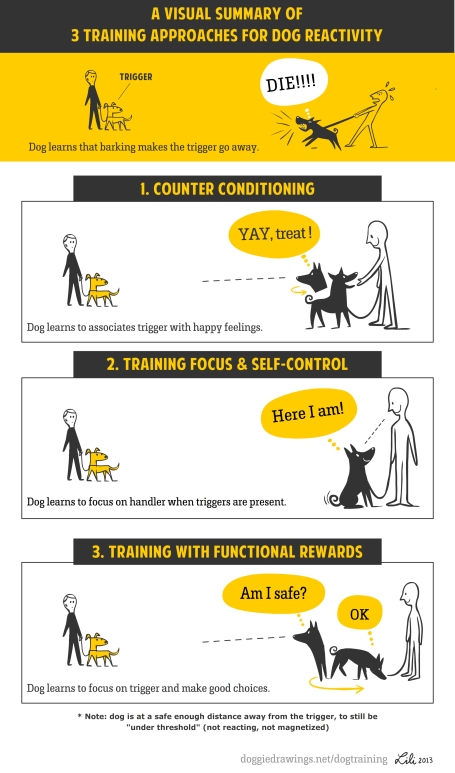
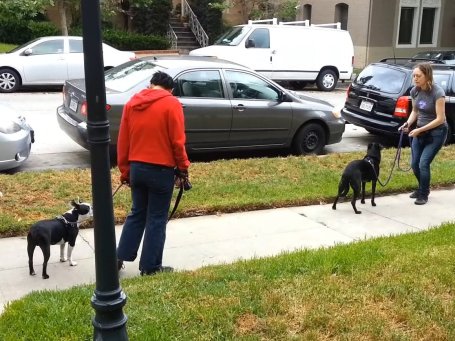

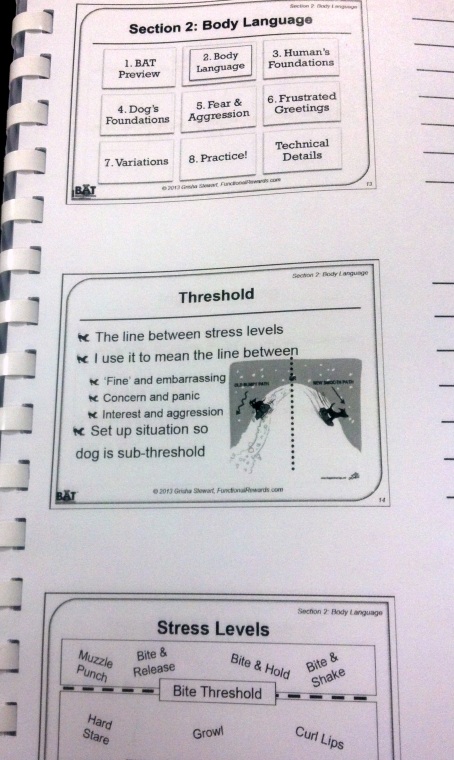
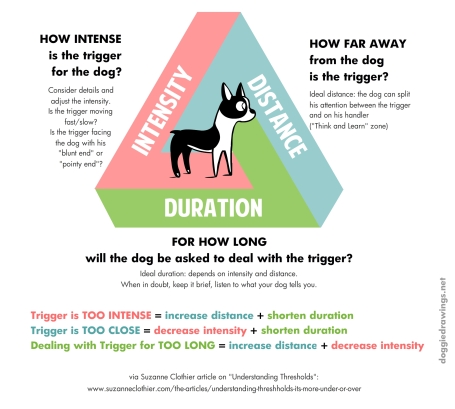
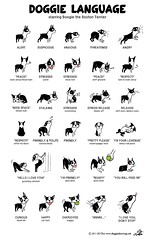
1. Grisha Stewart, MA, CPDT-KA | May 17, 2013 at 7:38 pm
Grisha Stewart, MA, CPDT-KA | May 17, 2013 at 7:38 pm
Thanks for the chance to work with Boogie! I’m glad you’re getting the finer points. I like the way you processed things here.
In answer to one of your questions, it’s definitely always good to try to figure out with Boogie if it’s too much too soon or if he’s really got the information he needs. I think after the sniff to Peanut he 1) had determined that Peanut wasn’t going to attack him so he could do something else but also 2) was still worked up from the greeting. Doing more walks together before getting to the greeting stage would make those go better, I’d think. And if you do them on your own, please use a fence in between for safety. You can do parallel walking with a fence in between, too, so scope out some parks with fences that you can walk or drive to for a BAT set-up with your new neutral-dog friends.
He’s got a giant-sized opposition reflex, so definitely do Silky Leash.
For the other techniques, just to be clear, it’s possible to change the dog’s understanding of the trigger, in a more of less permanent way, but the treats or the punishments can be counterproductive, too. Dogs need to really get information about the trigger and if you can use open bar / closed bar classical counterconditioning (CC) or clicker training focus to get close enough to experience the trigger and figure out that it’s safe, rehab is likely to happen. You can even combine tools to allow the dog free choice throughout, but sometimes have food. However, if the dog spends all of her time doing the windshield-washer thing (see man -> get treat, see man -> get treat) then the dog doesn’t have a chance to process the information.
Doing punishment-based ‘obedience’ near the trigger is a common technique with potential for even worse fallout, because the dog is distracted AND the dog can make a negative association with the trigger. At least with food, the dog is having a good time.
Anyway, I’m glad that your take-home message was to allow for more choices and more delicate leash handling. 🙂
2. lili | May 18, 2013 at 7:08 pm
lili | May 18, 2013 at 7:08 pm
Thank you, Grisha! 🙂
3. vicky o'connor | May 18, 2013 at 1:20 am
vicky o'connor | May 18, 2013 at 1:20 am
I was unable to open your ‘Boogie’ You Tube videos, as they are set to ‘Private’. If you go to your account, you can change them to ‘Public’.
4. Stacy | May 18, 2013 at 2:23 am
Stacy | May 18, 2013 at 2:23 am
Lili the videos of Boogie on this post are set to private so we cannot view them.
5. lili | May 18, 2013 at 4:09 am
lili | May 18, 2013 at 4:09 am
Vicky and Stacy – Sorry! I forgot to make them public. I have changed the setting…. do they work now? (they were working for me, anyway)
6. teresavet | May 19, 2013 at 9:28 am
teresavet | May 19, 2013 at 9:28 am
Hi Lily,
one thing I’ve learned in my classes, is that we all think every dog wants to engage with every other dog. And that’s not true. Our dogs are exposed to hundred other dogs, some they want to meet others, they do not.
In busy enviroments, some dogs they just can’t cope with everything. I try to respect that, and if the dog wants to go away, I don’t care if it is because they can’t cope or if they had enough. He has had enough, and I take it away. I respect his wishes, because if I don’t, it doesn’t matter how soft I work, its not rewarding for the dog that only wants to walk away. So walk away, and soon enough you’ll find another dog.
The purpose of BAT is to get the dog to a)have fun with other dogs, if he wants, or b)learn to ignore them if he doesn’t want to engage. I respect that, and if the dog doesn’t want to get near, I let him ignore it. It’s his choice!
Remember the 5 second rule? I apply it to other dogs, too, up close or in the distance.
7. lili | May 19, 2013 at 5:16 pm
lili | May 19, 2013 at 5:16 pm
Hi Teresa, thanks for commenting!
Using BAT has been really helpful because I get a better sense of what Boogie wants to do before we get close to the dog… if he wants to greet or move away. And I can respect this.
Ideally (yes I know this is sort of selfish of me) I want Boogie to have MORE positive relationships with dogs; I want more positive socialization experiences for him so my goal is to have him have fun greetings where possible. I am not sure yet how to get to this stage without me holding my breath at the final moment…
8. Grisha Stewart | May 19, 2013 at 7:51 pm
Grisha Stewart | May 19, 2013 at 7:51 pm
It’s not just being selfish, Lili. If Boogie has more positive experiences with dogs, it can really help his behavior toward other new dogs. But all greetings should be on his own terms, of course, and don’t greet if he doesn’t want it.
9. PROCESSING… more thoughts about Boogie and BAT. | Boogie's blog | May 23, 2013 at 9:48 pm
PROCESSING… more thoughts about Boogie and BAT. | Boogie's blog | May 23, 2013 at 9:48 pm
[…] This is a follow-on from my previous blog post. […]
10. Genius ideas | Boogie's blog | June 22, 2013 at 8:44 pm
Genius ideas | Boogie's blog | June 22, 2013 at 8:44 pm
[…] Retractable gate. A big thank you to the lady whose name I don’t remember (at Grisha’s L.A. BAT seminar) who told me about this local company. There is also a UK company that makes a similar product but […]
11. “NO!” and unwanted behavior. (Notes from Clickerexpo Part 2) | Boogie's blog | August 21, 2013 at 5:53 am
“NO!” and unwanted behavior. (Notes from Clickerexpo Part 2) | Boogie's blog | August 21, 2013 at 5:53 am
[…] am thinking of training protocols for reactivity/aggression like BAT , which include some element of Negative Reinforcement. To paraphrase what Grisha Stewart said […]
12. TTouch – “Walking In balance” DVD | Boogie's blog | December 24, 2013 at 9:26 pm
TTouch – “Walking In balance” DVD | Boogie's blog | December 24, 2013 at 9:26 pm
[…] to let our dog know when we want to slow down, turn around, or stop. Now I know where the “mime pulling” in BAT comes […]